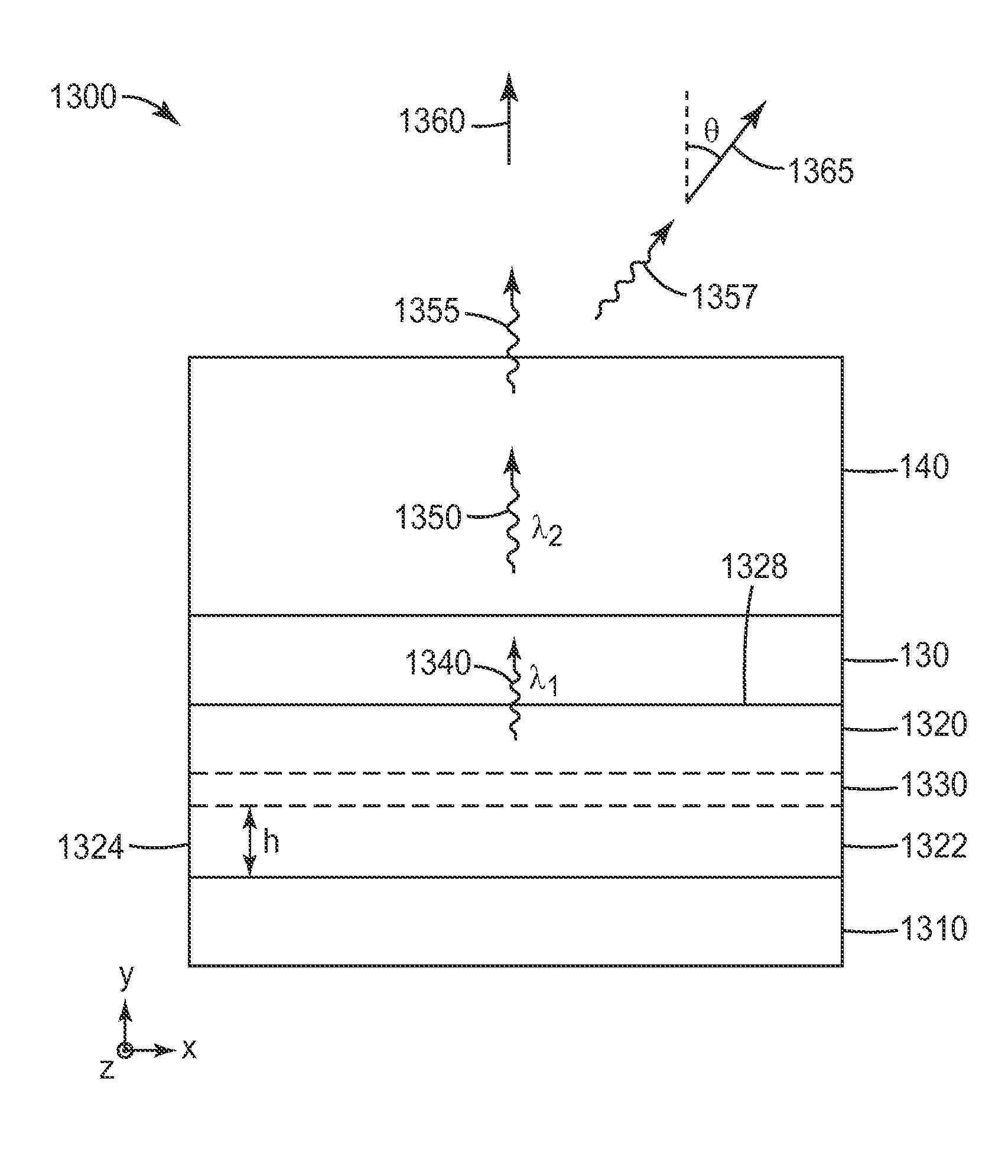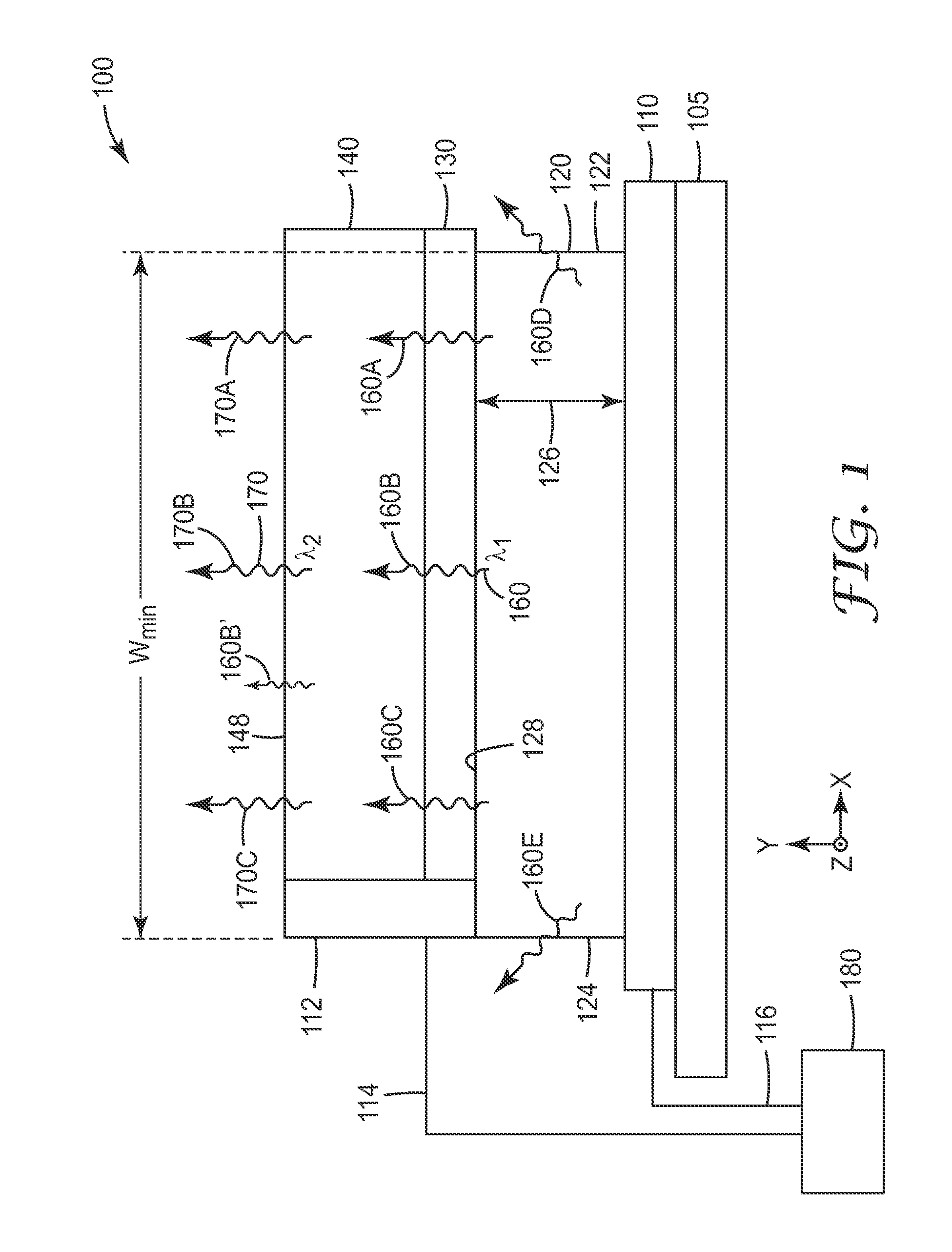Light source having light blocking components
a technology of light blocking components and light sources, which is applied in the direction of semiconductor devices, basic electric elements, electrical equipment, etc., can solve the problems of non-monochromatic light, and achieve the effect of enhancing the light emission from the top surface of the electroluminescent devi
- Summary
- Abstract
- Description
- Claims
- Application Information
AI Technical Summary
Benefits of technology
Problems solved by technology
Method used
Image
Examples
example 1
[0102]An amber emitting light emitting system similar to light emitting system 100 was fabricated. An LED capable of emitting light at λ1=455 nm was purchased from Epistar Corporation (Hsin Chu, Taiwan). The LED was an epitaxial AlGaInN-based LED bonded to a silicon wafer. Some portions of the top surface of the LED wafer were metalized with gold traces to spread the current and to provide pads for wire bonding.
[0103]A multilayer re-emitting semiconductor construction similar to re-emitting construction 140 was fabricated. The relative layer sequence and estimated values of material composition, thickness and bulk band gap energy are summarized in Table I.
[0104]A GaInAs buffer layer was first grown on an InP substrate by molecular beam epitaxy (MBE) to prepare the surface for subsequent II-VI growth. The coated substrate was then moved through an ultra-high vacuum transfer system to another MBE chamber for growth of different II-VI epitaxial layers. The re-emitting semiconductor con...
PUM
 Login to View More
Login to View More Abstract
Description
Claims
Application Information
 Login to View More
Login to View More - R&D
- Intellectual Property
- Life Sciences
- Materials
- Tech Scout
- Unparalleled Data Quality
- Higher Quality Content
- 60% Fewer Hallucinations
Browse by: Latest US Patents, China's latest patents, Technical Efficacy Thesaurus, Application Domain, Technology Topic, Popular Technical Reports.
© 2025 PatSnap. All rights reserved.Legal|Privacy policy|Modern Slavery Act Transparency Statement|Sitemap|About US| Contact US: help@patsnap.com



